Image Archive
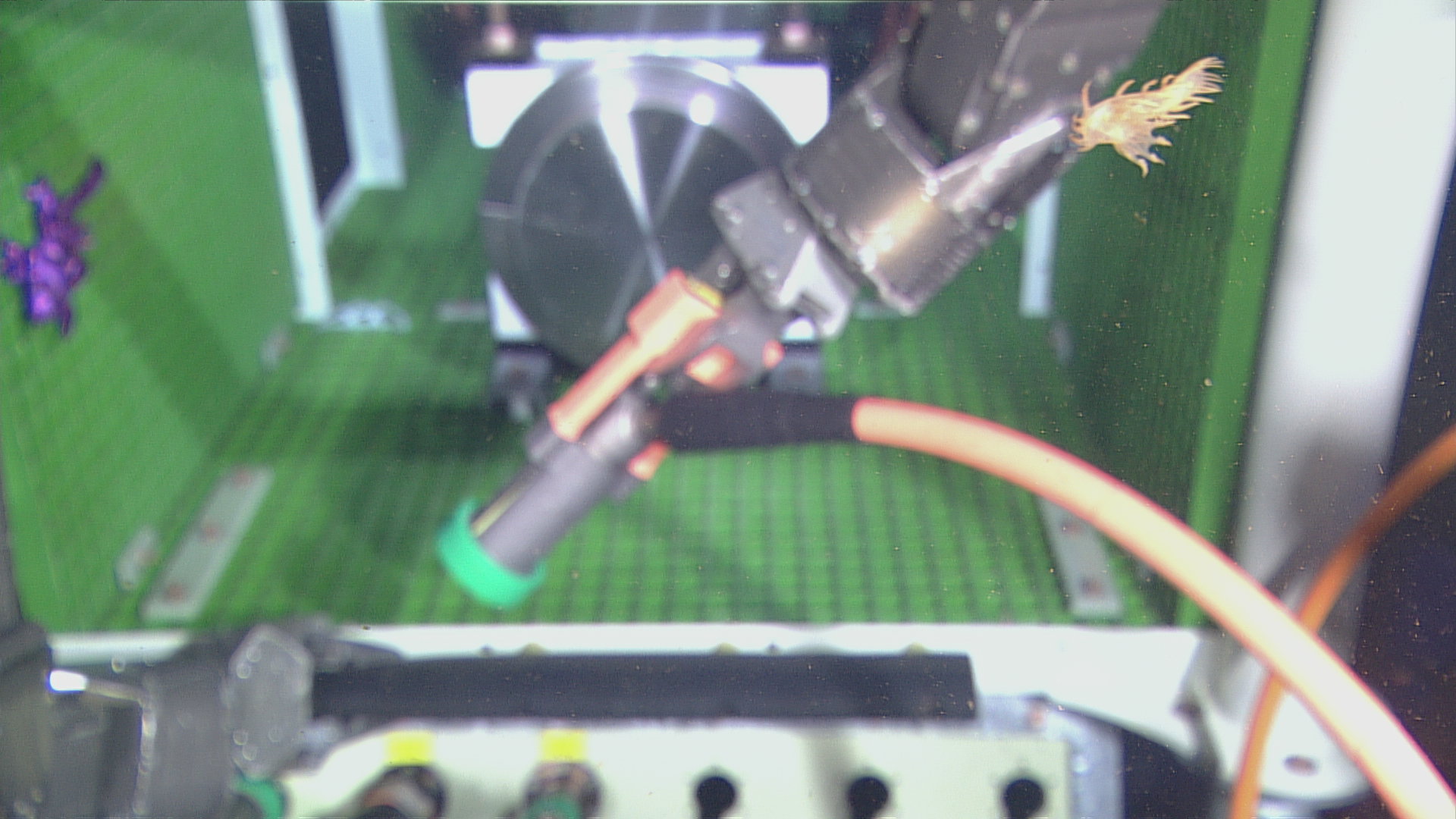

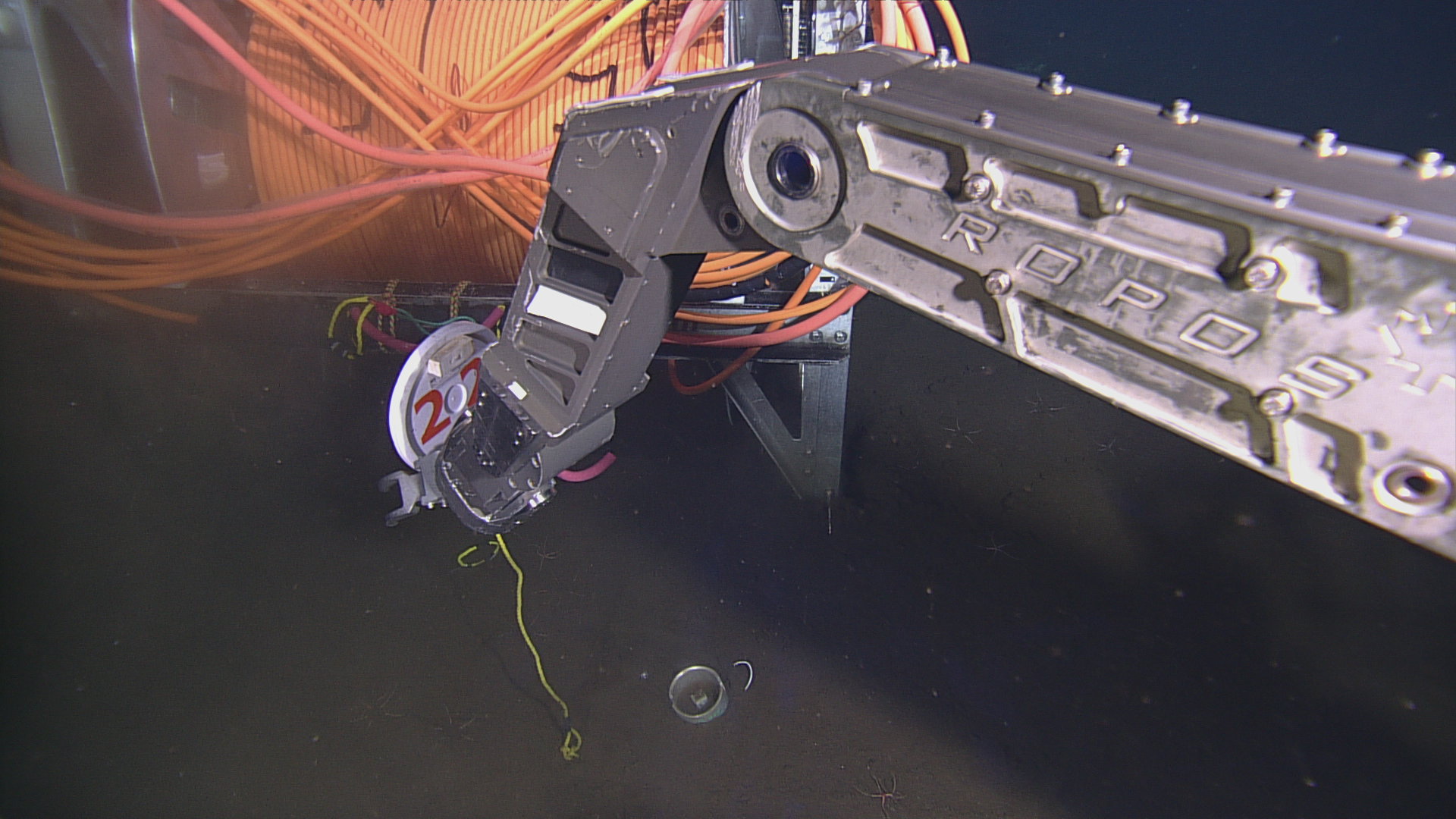
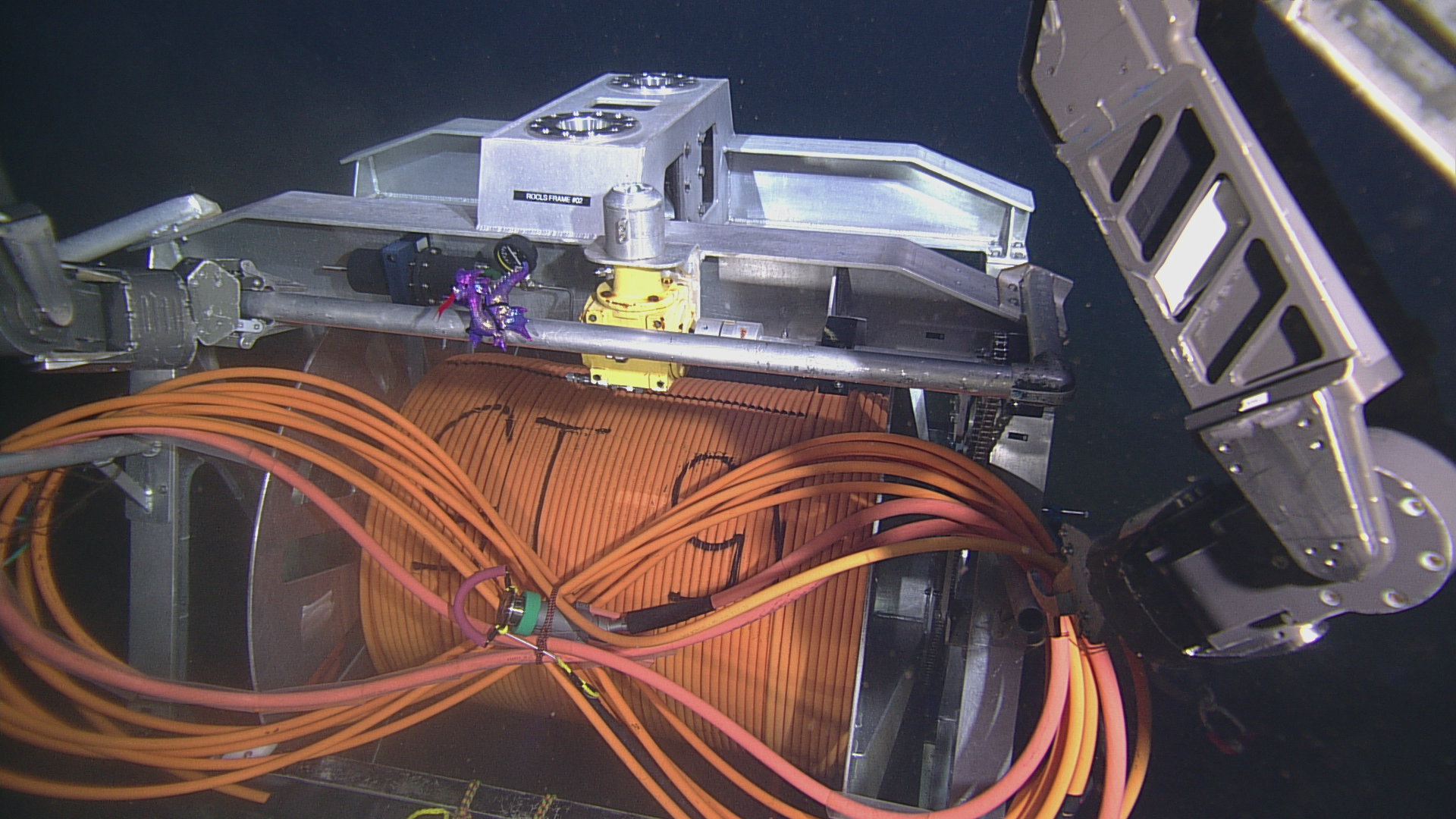










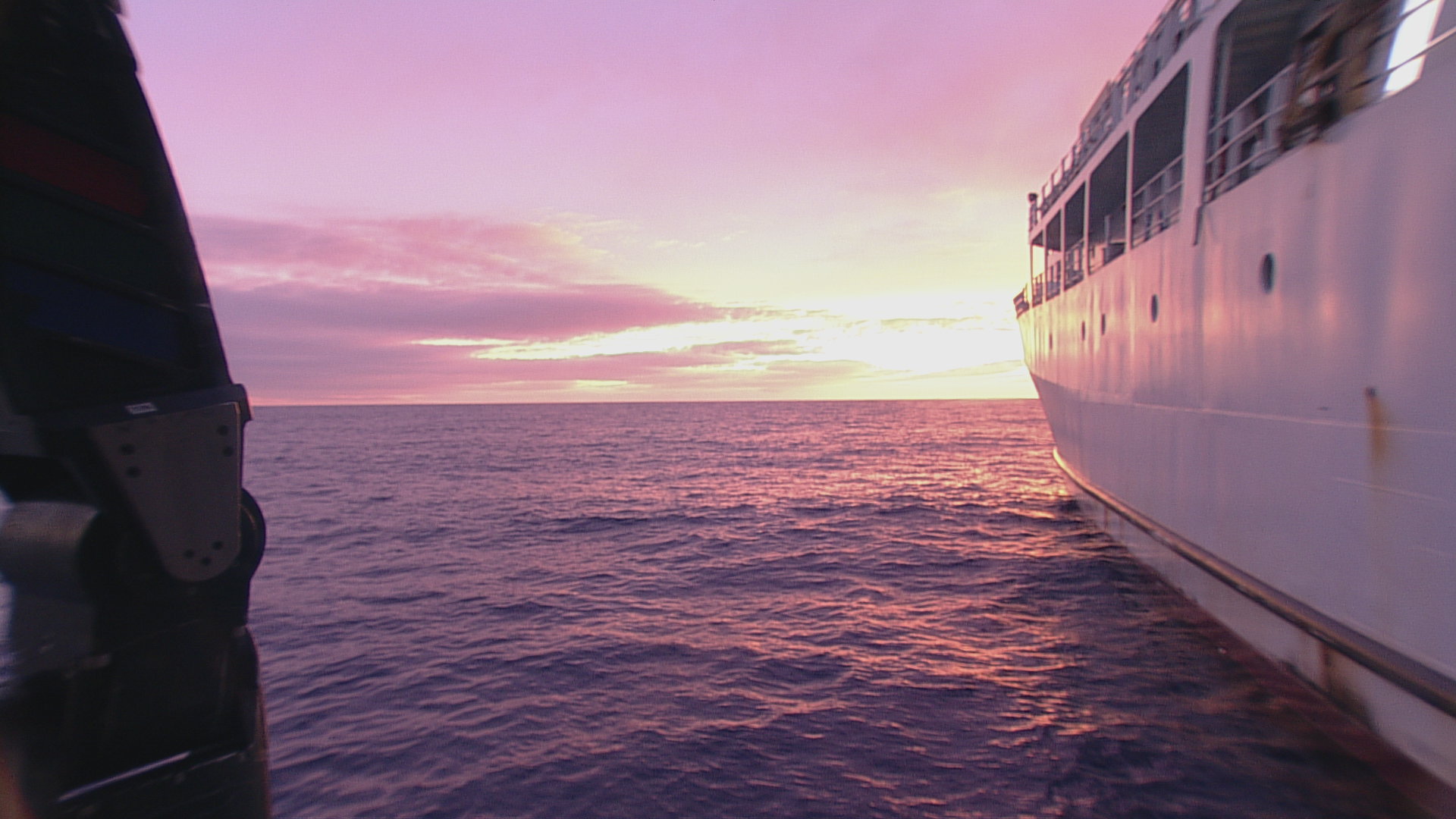

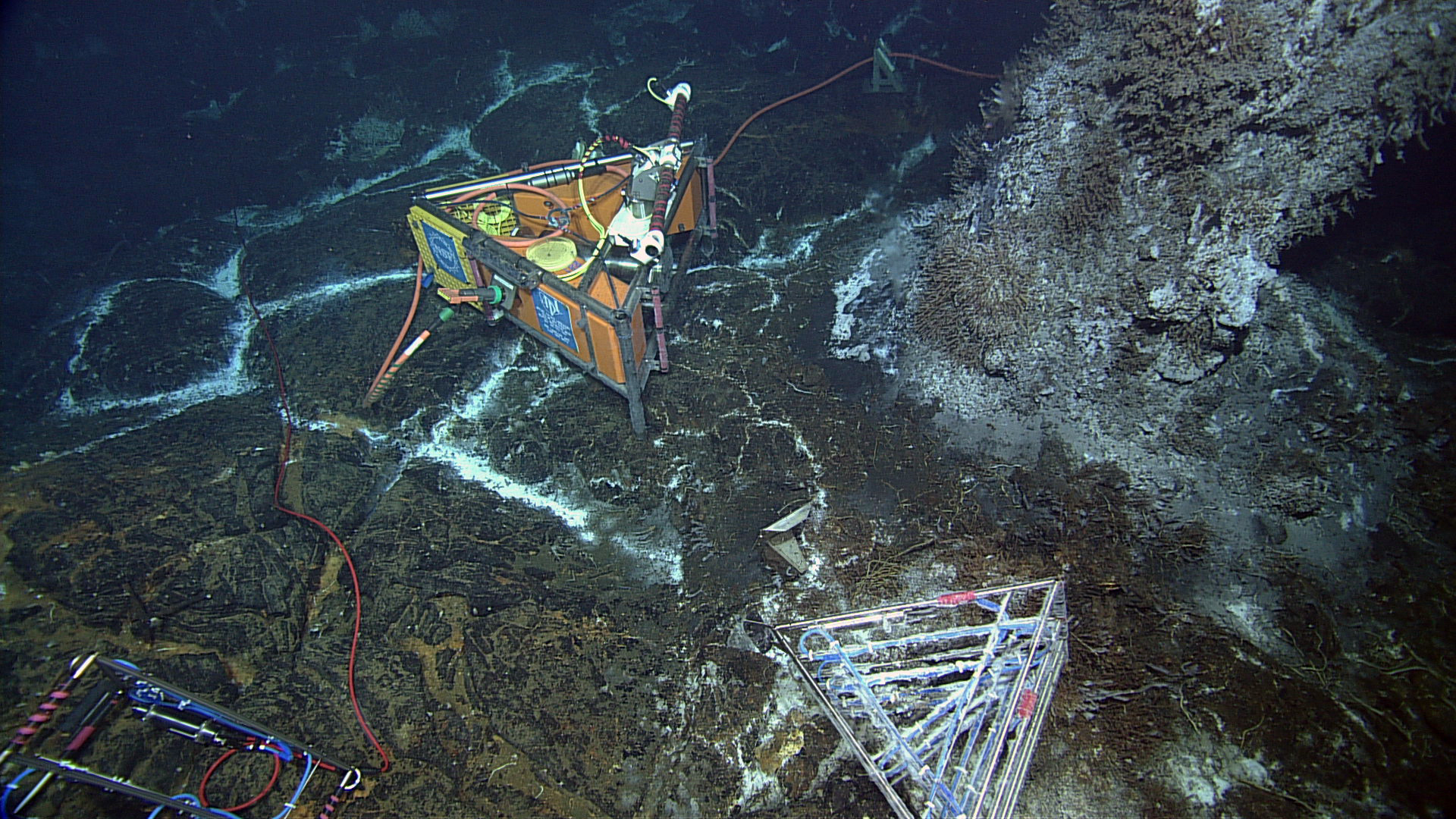


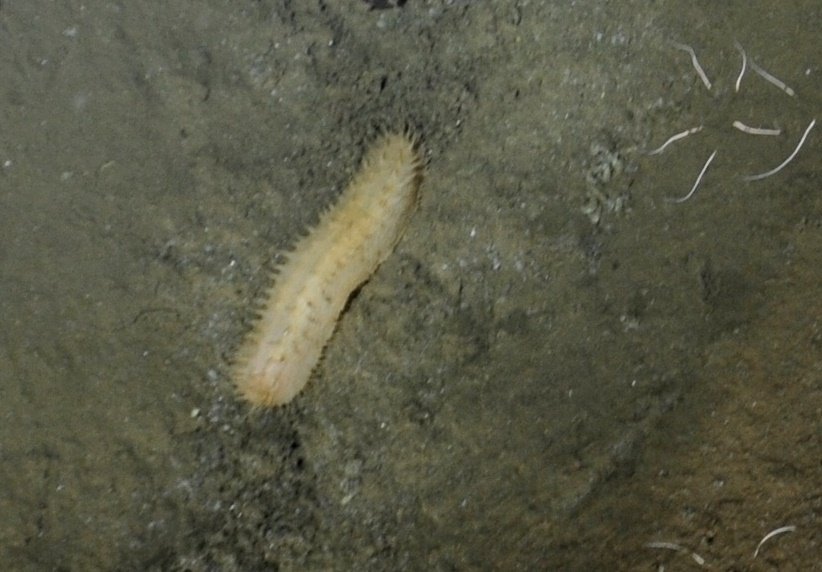

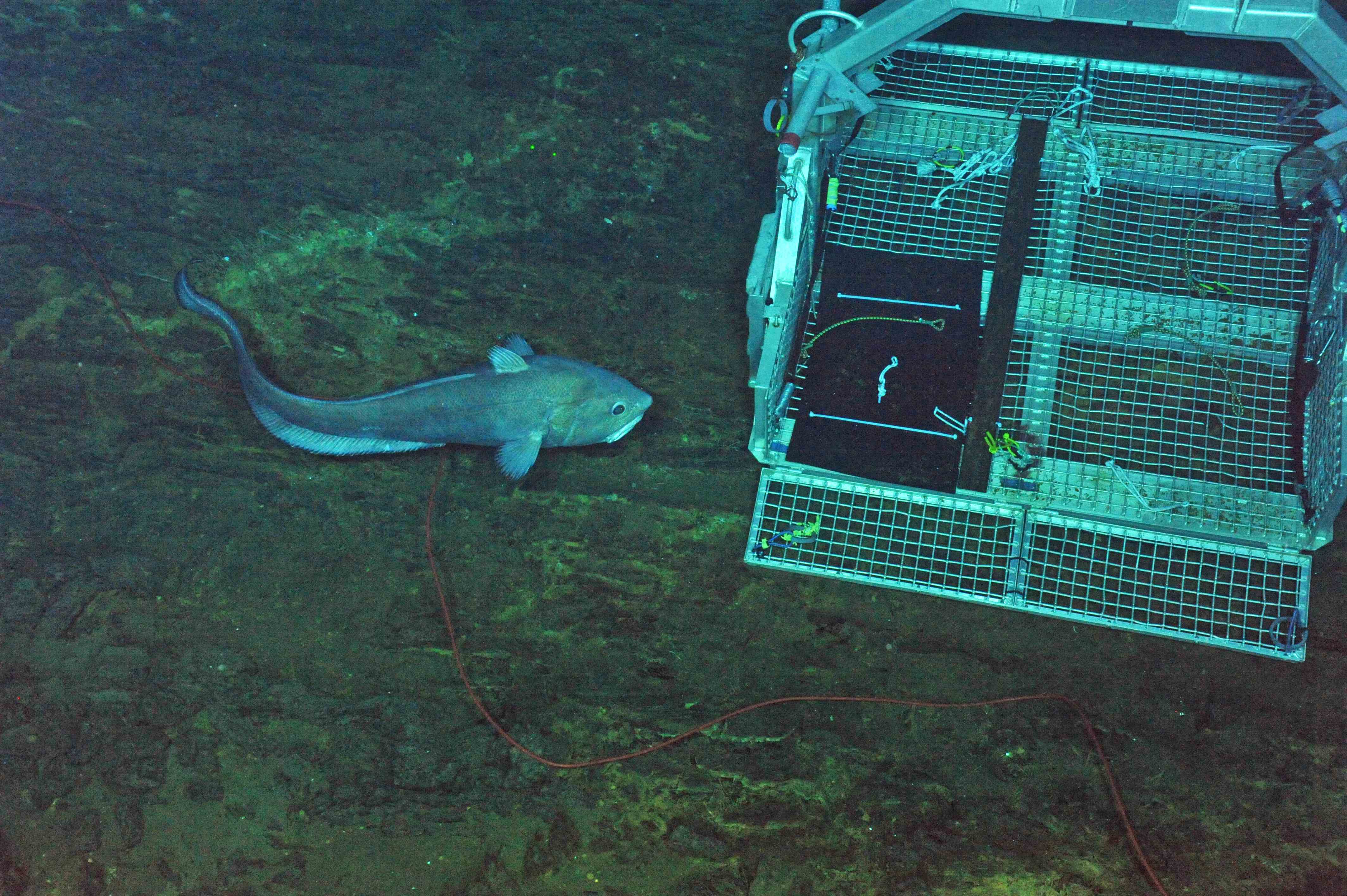





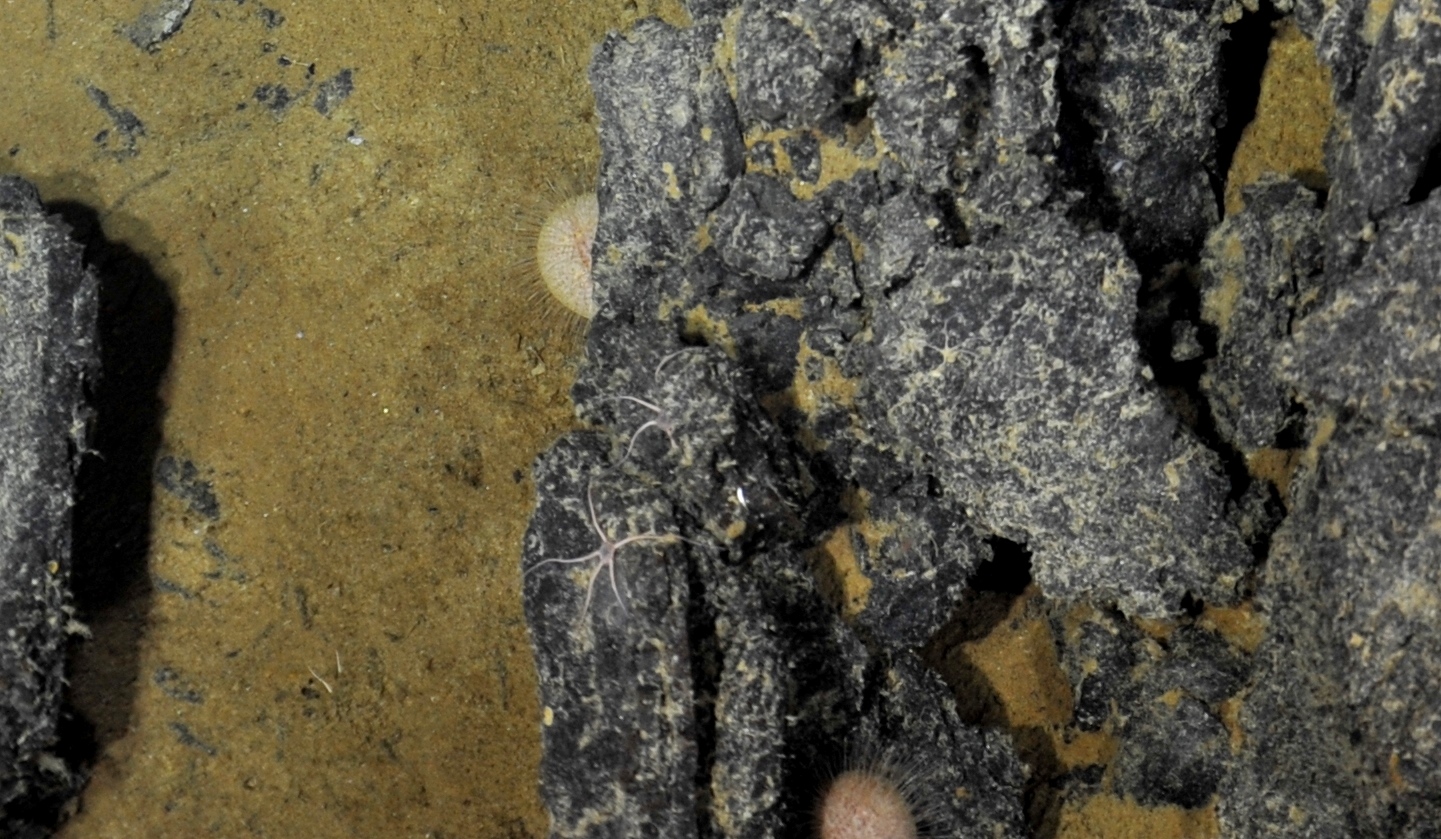

A swimming sea cucumber floating by ROPOS as it prepares to plug AXVMW4 into LV03A at Axial Base. Photo Credit: NSF-OOI/UW/CSSF, Dive 1737, V14

ROPOS removing the protective cap from the P1 end of extensions cable AXVMW4, prior to plugging it into low-voltage node LV03A at Axial Base. Photo Credit: NSF-OOI/UW/CSSF, Dive 1737, V14

Removing Marker #22 from the seafloor at Axial Base, prior to laying cable AXVMW4. Photo Credit: NSF-OOI/UW/CSSF, Dive 1737, V14

ROPOS removing the bungee cords holding the slack cable of AXVMW4 onto the ROCLS sled. Photo Credit: NSF-OOI/UW/CSSF, Dive 1737, V14

A closeup view of a dinner plate jelly seen at Axial Base during dive 1737. Photo Credit: NSF-OOI/UW/CSSF, Dive 1737, V14

A large purple Benthodytes (?) cucumber seen at Axial Base site during a cable lay transect. Photo Credit: NSF-OOI/UW/CSSF, Dive 1736, V14

A large white sea star encountered during a cable laying survey at Axial Base. Photo Credit: NSF-OOI/UW/CSSF, Dive 1736, V14

A soft-bodied echinothuriid sea urchin (in upper right) encountered during the cable lay survey at Axial Base. Photo Credit: NSF-OOI/UW/CSSF, Dive 1736, V14

A burrowing anemone on the seafloor at the Axial Base site. Photo Credit: NSF-OOI/UW/CSSF, Dive 1736, V14

Junction box LJ03A cabled to the low-voltage node LV03A at the Axial Base site. Photo Credit: NSF-OOI/UW/CSSF, Dive 1736, V14

A closeup portrait of a big red jellyfish (Tiburonia granrojo) seen during the ascent from the Axial Base site, at 1064 meters. Photo Credit: NSF-OOI/UW/CSSF; Dive 1736; V14.

A close-up portrait of a black rattail fish at the Axial Base site, at 2603 meters depth. Photo Credit: NSF-OOI/UW/CSSF; Dive 1736; V14.

Several pom pom anemones have found a temporary home in a furrow in the seafloor near the Axial Base site. Photo Credit: NSF-OOI/UW/CSSF; Dive 1736; V14.

A dinner plate jellyfish observed at 1573 m during the descent of dive R1736 at the Axial Base site. Photo Credit: NSF-OOI/UW/CSSF; Dive 1736; V14.

A sunset on 4 August, captured by ROPOS immediately prior to dive R1736, to deploy LJ03A. Photo Credit: NSF-OOI/UW/CSSF; Dive 1736; V14.

A close up of animals, including palm worms and tubeworms, on the hydrothermal chimney called Mushroom in the ASHES hydrothermal field. The image is a frame grab from video streamed during testing of the OOI-RCA high-definition video camera built by the Applied Physics Lab at the University of Washington. The camera has been at this site for 1 year. Credit: UW/NSF-OOI/ V14.

During ROPOS Dive R1730, the UW-RCA high-definition video camera was tested successfully. The camera was installed in 2013 and 1-year later it worked extremely well. A test 3-D thermistor array (bottom right) that was installed last year rests on a diffuse flow site, covered in microbial filaments. To the left, a cabled 3-D thermistor array will replace the uncabled system. Credit: UW/NSF-OOI/CSSF; Dive ROPOS R1730; V14.

This unknown species is relatively common at Axial, living among the basalt lava rocks. Photo credit: NSF-OOI/UW/CSSF; Dive R1731; V14

This giant rattail is more than 1 m in length explores the ROPOS tool basket in 2014. Credit: UW/NSF-OOI/CSSF; ROPOS Dive R1729; V14.

Unknown Sea Cucumber 2. Photo credit: NSF-OOI/UW/CSSF; Dive R1716; V14

A Big Red Jelly floats by the ROPOS camera. Photo credit: NSF-OOI/UW/CSSF; V13

A huge rattail fish followed the ROV ROPOS around the International District hydrothermal field for several hours. Near the end of the dive it investigated the tool basket, with thoughts that it might get in. Photo credit: UW/NSF-OOI/CSSF; ROPOS Dive 1729; V14.

Pacific Flatnose (Antimora microlepis) at Axial Seamount. Credit: UW/NSF-OOI/CSSF; ROPOS Dive R1720; V14.

This species is not yet identified, although it may also be Spinophiura jolliveti. It is the dominant brittle star at the base of Axial. Photo credit: NSF-OOI/UW/CSSF; R600; V13

A deep-sea octopus ignores ROPOS at the Escargot hydrothermal vent in the International District vent field at the summit of Axial Seamount. Credit: UW/NSF-OOI/CSSF; ROPOS Dive R1723; V14.

A rear view of the Spider Crab Macroregonic macrochira at Axial Seamount. Photo credit: NSF-OOI/UW/CSSF; Dive R1727; V14

The spider crab Macroregonic macrochira is very common at Axial Seamount. Credit:UW/NSF-OOI/CSSF; ROPOS Dive R1727; V14.

There are likely to be many sea urchins hiding beneath the vast lava rock fields at Axial.Here, several of the Unknown Sea Urchin 1 variety are shown. Photo credit: NSF-OOI/UW/CSSF; Dive R1724; V14
- Anemone
- Animal
- Arthropod
- ASHES
- Axial
- Axial Base
- Axial Biology
- Axial Caldera
- Bacteria
- Basalt Lava
- BEP
- Biofouling
- biolgoy
- Biology
- Camds
- Camera
- Camhd
- Central Caldera
- Ciliates
- Cnidaria
- Coastal Biology
- Crab
- Deep Profiler Mooring
- Dive Highlights
- Eastern Caldera
- Echinoderms
- Endurance Array
- Engineering Team
- ENLIGHTEN 10
- Exploratorium
- Fish
- Geology
- HD Camera
- HPIES
- Hydrate Ridge
- Hydrates
- Hydrophone
- Hydrothermal Vents
- Illustration
- Inshore 80 Meters
- Instrument
- International District
- J-BOX
- Jason
- Jellyfish
- Junction Box
- K12
- Lava
- Mollusk
- Moorings
- Nodes
- Nudibranch
- Octopus
- OOI
- Oregon Offshore
- Oregon Offshore 600 m
- Oregon Shelf
- Oregon Slope Base
- People
- PN1B
- PN1D
- Polychaetes
- PPSDN
- Primary Node
- RASFL
- ROCLS
- ROPOS
- ROPOS Dives
- ROV Team
- RV Revelle
- RV Sikuliaq
- RV Thompson
- Salp
- Sample
- SC13
- Science Team
- Sea Cucumber
- Sea Star
- Sea Urchin
- Seafloor
- Seismometer
- Sensors
- Shallow Profiler Mooring
- Shark
- Shipboard
- Shore Station
- Slope Base
- Smoker
- Soft Coral
- Southern Hydrate Ridge
- Sponge
- Squid
- Students
- Students & Guest Participants
- Tmpsf
- Tubeworms
- VISIONS 11 Leg 1
- VISIONS 11 Leg 2
- VISIONS 11 Viewers
- VISIONS 13
- VISIONS 14
- VISIONS 15
- VISIONS 16
- VISIONS 17
- VISIONS 18
- VISIONS 20
- VISIONS 22
- VISIONS 23
- Visualization
